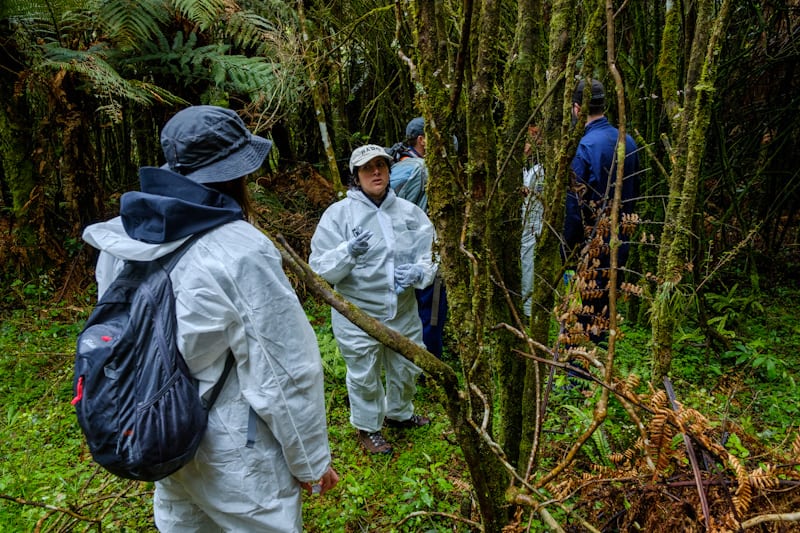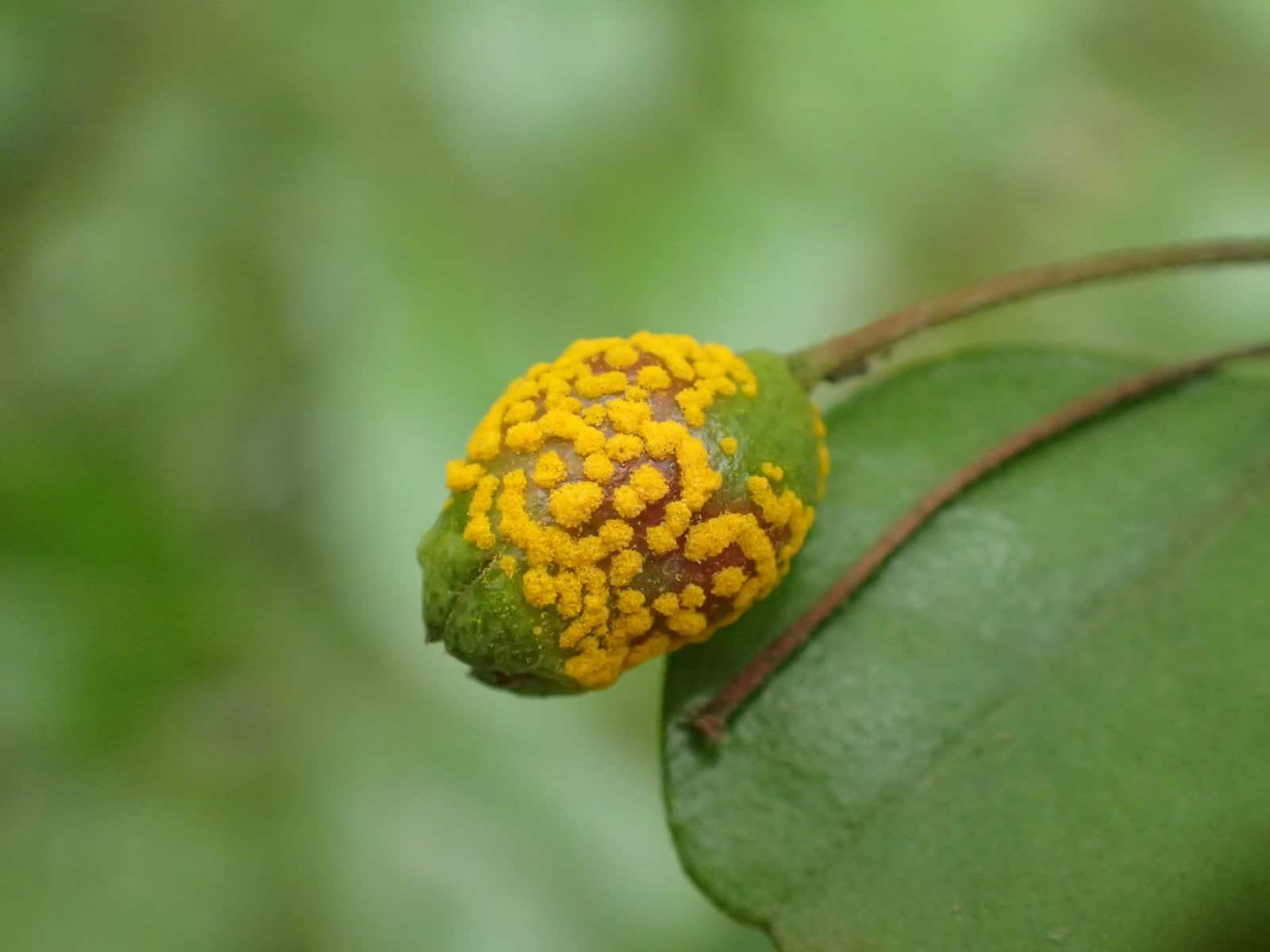
“We have no idea how bad it is because we aren’t doing any nationwide surveillance or monitoring,” says Ganley.
The knowledge we do have about the progression of the disease is derived from the few areas where communities and researchers are actively looking. In some places, like the East Coast where ramarama (Lophomyrtus bullata) trees and seedlings are dying, the impact of the disease is intense.
“There will be no succession or replacement of this species in that ecosystem,” says Ganley.
In other places, the disease hasn’t progressed as quickly. Ramarama in Taranaki, for example, are faring better than East Cape ramarama.
The progression and intensity of the disease varies at a species level as well.
“Ramarama and swamp maire (Syzygium maire) appear to be the most susceptible of our 27 Myrtaceae species, with rōhutu (Lophomyrtus obcordata) sitting on the cusp,”
says Ganley.
One of the factors that places rōhutu on the cusp is that some South Island populations are currently outside of the environmental range of the disease. Rōhutu may be able to persist in these “refugia” even if the disease causes localized extinctions elsewhere.
“Having it persist in the South Island is better than losing it completely, but it is still not an acceptable outcome,” says Ganley.
While disease impacts are most severe in these three species, there are numerous other species that may be at risk.
“In Australia, which has had the disease since 2010, they are starting to see the collapse of species that were relatively tolerant,” says Ganley.
This means it’s possible that our less-susceptible Myrtaceae (like pōhutukawa, mānuka and rātā) will be weakened by repeated low levels of infection.
“How will those trees respond to year after year of repeated infection?” Ganley wonders. “Will there be a tipping point where the pathogen weakens the trees to the point where they succumb?”
These questions won’t be answered without more information. Ganley has identified two main things that would really help in terms of broadening understanding of the current impacts of the disease and change its trajectory.
The first is national operations, with special attention paid to surveillance and monitoring.
“We need to know what’s going on across the country,” says Ganley. “Surveillance will tell us where we’ve got infection and how bad. This will give us priority areas and species to focus on.”
Monitoring would be useful for tracking the effects of the disease over time and understanding how the disease progresses.
“Without monitoring, it could be years before we realize the impact on pōhutukawa,” says Ganley.

A nation-wide surveillance and monitoring effort would support and contextualize the work being done by individual groups and organizations at a localized level.
The second thing that would help give our taonga species a fighting chance is progressing the research. Ngā Rākau Taketake surge funding ends in June and Beyond Myrtle Rust ends next year.
“There has been some absolutely fantastic science that has been delivered across multiple areas from scientists from multiple research organisations,” says Ganley. “We need to have continuation of this exceptional work.”
From refined climate predictions to promising new disease controls, researchers are on the brink of delivering game-changing outcomes in myrtle rust management and Myrtaceae species conservation.
But the application of research outcomes depends on a strong operations component, the kind that is needed to implement nation-wide monitoring. Without funding for centralized operations, tools that are in the process of being developed cannot be systematically applied across the landscape.
“Our research outputs do go out to individual organizations,” says Ganley, “but it’s a lot of work to get that information out to these wider groups without a centralized operations structure in place.”
Ganley is hopeful that additional research outputs paired with a strong operations component will give our taonga species a fighting change. “Some people say that there’s not much to be done about myrtle rust,” says Ganley. “I totally disagree with that. There is a lot that we can do, and the more research we do, the more we understand what the best options are.”
